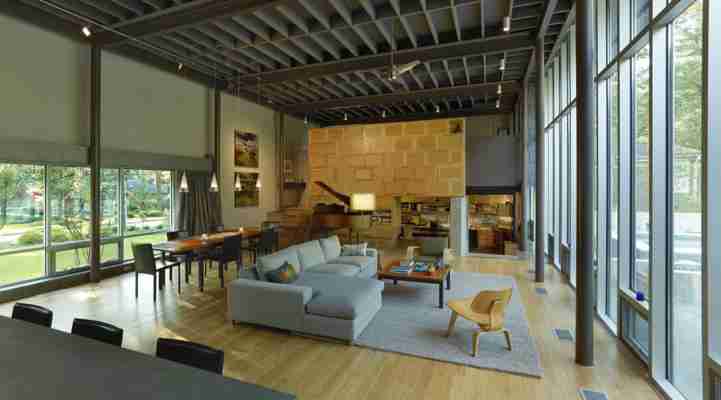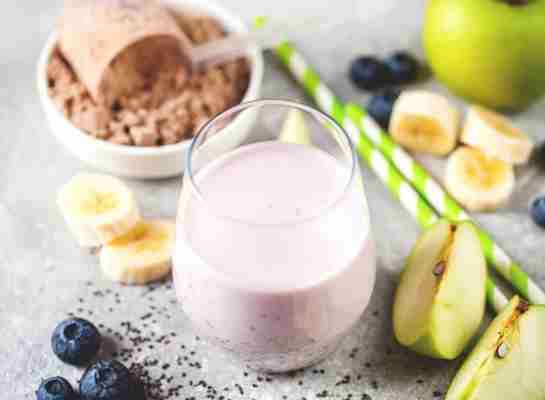Protein Powder: The What, Why, & How To Choose
Interior designers reveal the 12 things in your home you should get rid of
Take down any window treatments that make it difficult for you to get natural light.

This might mean swapping out your heavy drapes for sheer ones. Shutterstock/backpacker79
Natural light can brighten a room, make it look larger, and show off light-catching finishes, according to Annie Santulli of Annie Santulli Designs.
So, naturally, the first thing she thinks you might want to get rid of is any window treatment that makes it especially difficult for you to get natural light.
"Window treatments should frame a space, but they don't have to be overbearing or heavy to add warmth," Santulli told Insider. "Using sheers or translucent metallics are a way to create some level of coverage without adding weight."
But if you still want to block the sun or have privacy, she suggests layering different window treatments to add dimension and texture to your space "while also allowing for more options to handle light and privacy."
Five design concepts for a more livable home
In the past, homeowner advice focused more on resale value than livability. Families looked for ways to sell their “for now” homes in the shortest amount of time for the most amount of money. The growing desire to age in place, however, means families are trading in their somewhat nomadic lifestyles and searching for a long-term living space. With that in mind, it's time to rethink and rearrange our houses so that they function as facilitators for spending quality time with family and friends.

Whether this transition to a long-term abode is crafted from scratch or a custom tailored renovation, employing the services of an architect can help create this forever home while protecting its asset value. For some, this means simply repurposing unused rooms to accommodate current activities. For others, it is about creating entertaining focal points by graciously connecting indoor and outdoor living spaces.
Before embarking on a new set of plans or creating a list of livability improvements, consider the following concepts:
Hierarchy of design
No matter where you plan to build or the kind of home you envision, be sure to make the difficult-to-alter big decisions before focusing on smaller decisions that can be amended without major upheaval.
The recommended sequence is to start with selecting the neighborhood, then the specific parcel within that neighborhood. Next is to determine a floor plan that facilitates how you live, how the rooms flow together in zones, the internal circulation, and connections to exterior spaces. The final touch is style. Style is the result of a whole series of influences and should only be determined towards the end of this process.
Rethinking your home? Visit AIA’s Architecture Firm Directory to find an architect near you.
If you follow these steps, selecting the appropriate look will follow as an authentic flourish. Architects who specialize in residential design can help you recognize what works and what does not; their design skills will ensure that your home accommodates your family’s needs and budget.
Bigger isn’t always better
There is often truth in the phrase “less is more.” Increasing a home’s livability may lead to an improved but downsized version of the best features from your past homes. If renovating, your needs may best be addressed by some well-placed surgery rather than major rework or additions.
Take, for example, the homeowner with rooms positioned like a string of pearls. The rooms were “efficiently” arranged such that you had to pass through one to get to another, creating traffic jams during parties. After consulting with an architect, the need for a living room addition was avoided by the careful insertion of a new doorway that relieved any problematic circulation between entertainment spaces. An architect sees your home as living entity with a myriad of interrelated activities, and their services can be invaluable in informing your decisions to build, renovate, or add on.
Rethink underused spaces
Before embarking on an addition, conduct a quick audit to identify those areas that are rarely used and no longer necessary for your lifestyle. These should be considered as resources that can be repurposed to serve current needs. Consider the dining or formal living room that is rarely used; their lack of use makes them prime targets to become a music room, home office or—by removing walls—a breakfast room open to the kitchen. Rethinking the usage and layout of existing rooms often reduces the need for additional construction to make your home more livable.
Consider multifunctional rooms
A great way to reduce the required size of your house without sacrificing functionality is to outfit one room to accommodate multiple functions. In lieu of creating a separate state-of-the-art, theater-style media room, integrate the same equipment into your family room. What would otherwise become an event isolated from the rest of the home and family activities instead allows for more of a den experience, and in only half of the space.
Expanding living space outdoors
Outdoor living spaces are being designed for year-round use, and can be a delightful method of increasing usable living space. Connecting interior living spaces with adjacent covered porches, outdoor kitchens, BBQ pits, and outdoor fireplaces can significantly expand your capacity to graciously entertain guests, for the price of some additional roofing, deck flooring, and appliances.
Every home design or improvement project should aim to help your family connect with each other while enjoying the house more thoroughly. By enlisting the services of an architect, you will increase your chances of “getting it right,” and plan to keep costs within budget.
About the author: Kevin Harris, FAIA, is a custom residential architect and past chair of AIA's Small Project Practitioners Knowledge Community.
Protein Powder: The What, Why, & How To Choose
With all the different protein powder supplements on the market it can be easy to get overwhelmed in picking the best option. Between whey, plant-based, and collagen proteins, it can be hard to decide which one is the best fit for you.

Image by
Protein is a key macronutrient that is a building block of muscle, bone, cartilage, and skin. It’s important to eat enough protein as well as to get good quality sources of protein. Protein also takes a longer time to digest than carbohydrate, so it helps us to stay full longer and feel satisfied. Aim to get your nutrients, including protein, from foods rather than supplements where possible. Dietary protein sources include foods like nuts, seeds, meats, seafood, soy products like tofu and edamame, and beans.
While protein powder can be a beneficial addition to some people’s diet, not everyone needs to supplement with it. It’s common for bodybuilders and athletes to use protein powders to meet their higher need, however, most people already get enough protein in their diet. The Recommended Dietary Allowance (RDA) is 0.8 grams of protein per kilogram of body weight. This number can vary depending on a person’s age, sex, activity levels, muscle mass, and health status. Most people will not need a protein powder, but they can be a useful tool if someone is not getting enough protein in their diet or wants to add an easy source of protein to a quick snack like a smoothie.
Types of Protein Powders
Whey protein and casein protein are animal-based protein powders made of dairy. Whey and casein protein are the types of protein found in cow’s milk that are dried into a powder. They are considered high quality proteins that contain all the essential amino acids that you must get from food since your body can’t make them. Collagen is another animal-based protein from the connective tissues of cows (bovine), fish (marine), or chicken. Collagen has been said to improve skin, joint, hair, nail, and gut health, however the research is limited, and these benefits are not conclusive.
Soy, hemp, rice, and pea proteins are common plant-based protein options. A lot of plant-based proteins, contain a combination of these in order to diversity the amino acids it contains so that it is considered a “complete” protein. A complete protein contains all 20 amino acids, including the nine essential amino acids our body cannot produce on our own.
Choosing a Protein Powder
For whey protein, there is whey isolate and whey concentrate. Whey isolate is a highly filtered form of whey protein and contains less than 1% of lactose. It has less fat, carbohydrates, and calories than whey concentrate and contains as least 90% protein. This would be a good option for people who do not tolerate lactose well or are looking to maintain muscle while losing fat. Whey concentrate contains between 70-80% protein, is higher in lactose, and is high in biologically active components you’d find in whole milk. This would be a good option for those looking for better recovery from workouts, and for building/maintaining muscles. Isolate is going to be more expensive than concentrate since it has more processing to filter out more fat and carbohydrates.
Plant-based protein powders can accommodate different lifestyles and people with dietary restrictions. They are higher in fiber and lower in fat than animal-based proteins. They are also nutrient dense and promote muscle growth. Some of these protein powders contain only one type of plant-based protein such as pea while others contain a mixture. Often times, the ones containing a mixture are considered a complete protein while the ones containing a single type are an incomplete protein. It is not necessary to choose a protein powder based on if it’s a complete protein because as long as you’re eating a variety of protein foods throughout the day, you’ll get all the amino acids your body needs.
Since protein powders are considered a supplement, and therefore their content is not regulated by the FDA, look for one that is labeled as third-party certified. Third-party testing verifies that the ingredients on the label and the amounts are what is actually in the protein powder. Lastly, it’s important that you like the taste and enjoy using the protein powder, so be sure to choose something that is aligned with your personal preferences; check the ingredients list for additional additives or sweeteners.
For students in need of additional support resources:
The UGA food pantry is fully stocked and available for students in town. Students should call Student Care and Outreach to set up a time for pick-up (706.542.7774) or contact them via email at with any questions. Information about emergency funding and Graduate Student emergency funding can be found here: Student Affairs emergency fund and Graduate Student emergency fund. Bulldog Basics is also still running for students in town. Students can request basic hygiene items here.
Written by: Sophia Burnett, FDNS 5910 Dietetics Practicum Student, UHC Health Promotion Department

